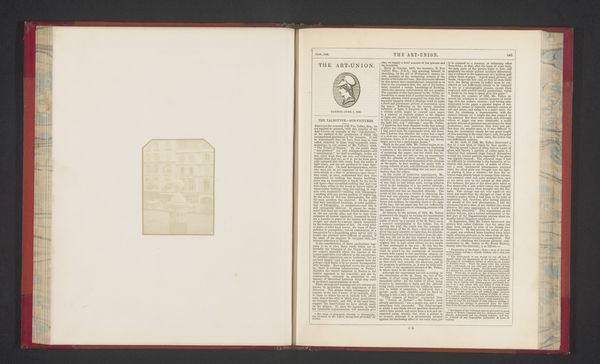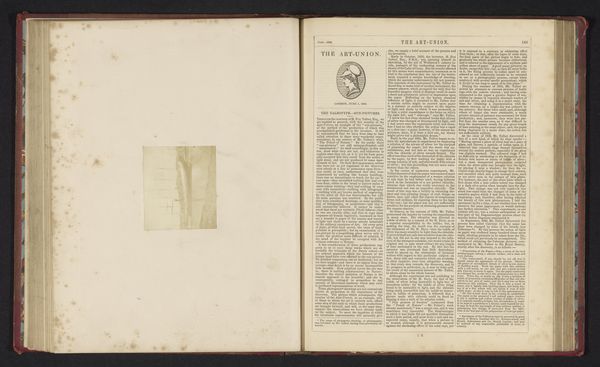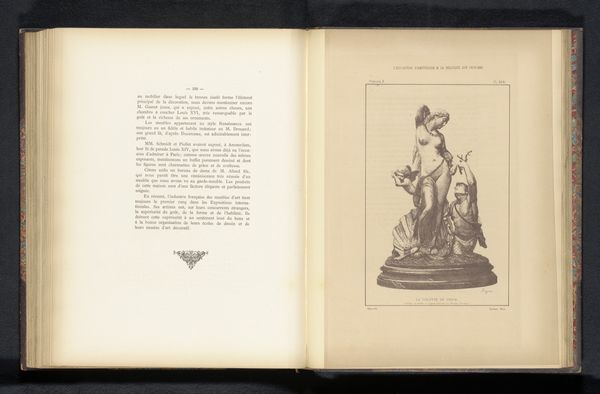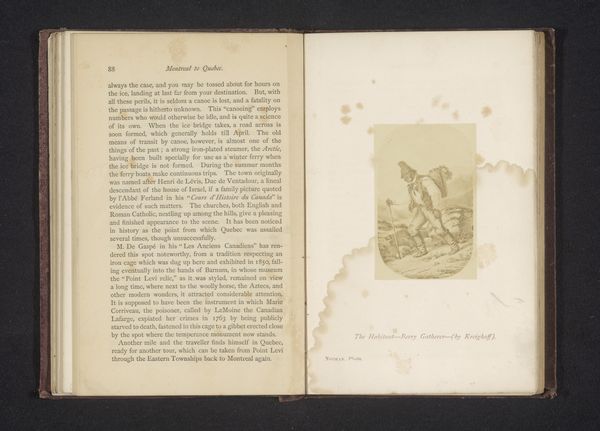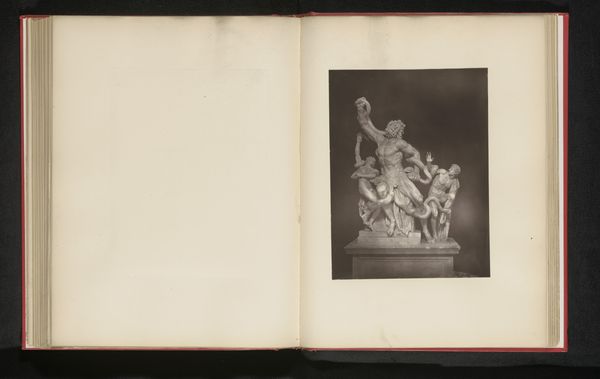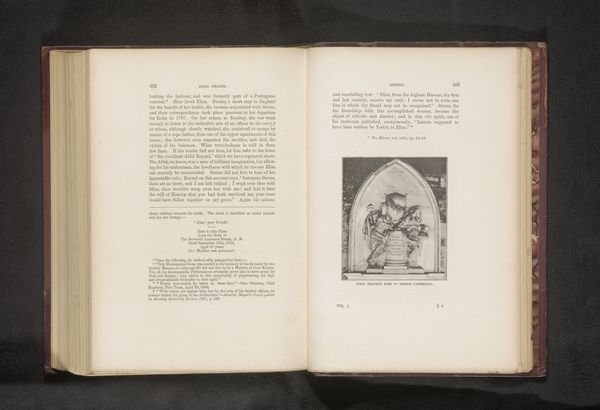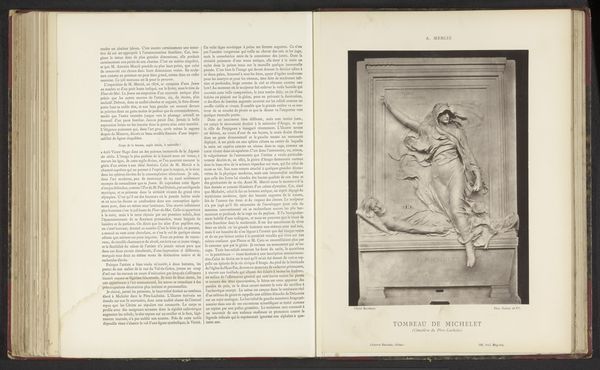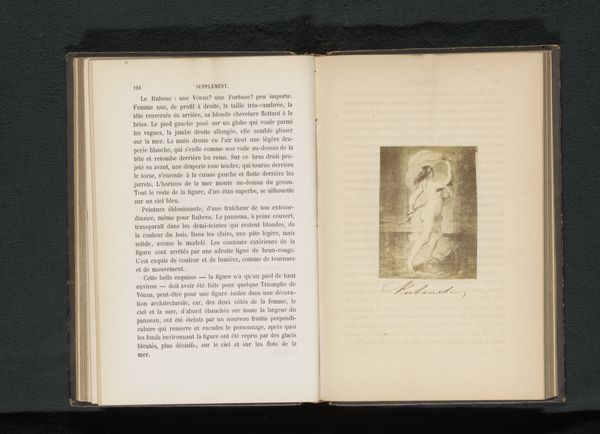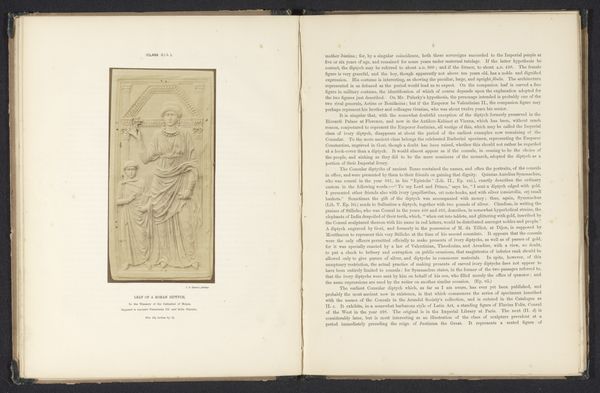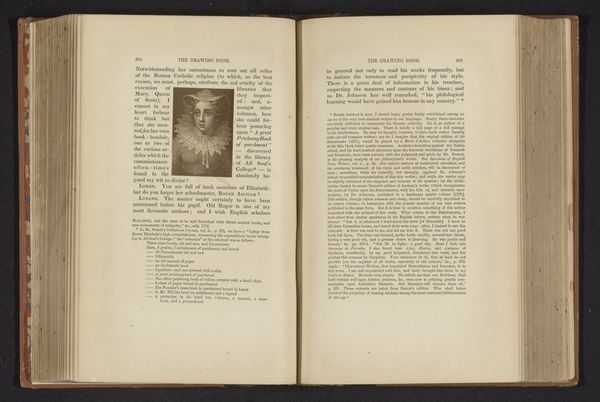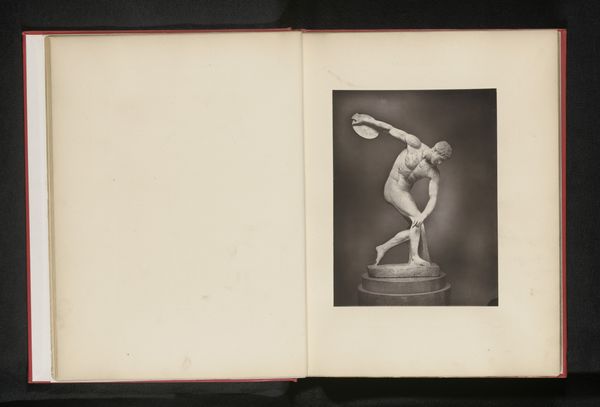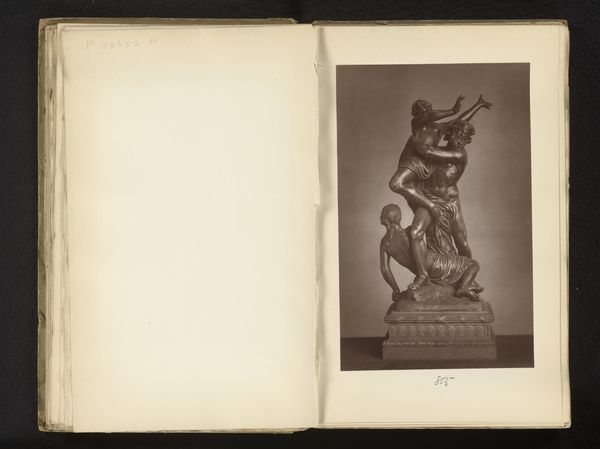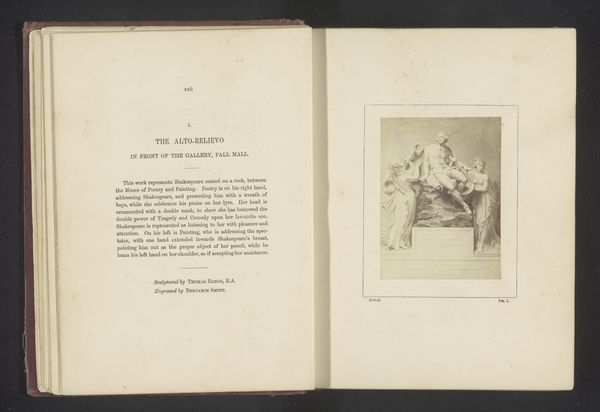
Porseleinen beeld naar Giambologna, voorstellende de Sabijnse maagdenroof before 1844
0:00
0:00
print, photography, sculpture
#
portrait
# print
#
classical-realism
#
photography
#
sculpture
#
academic-art
#
realism
Dimensions: height 300 mm, width 148 mm
Copyright: Rijks Museum: Open Domain
Editor: Here we have a photograph by William Henry Fox Talbot, dating from before 1844. It depicts, I believe, a porcelain sculpture after Giambologna’s "The Rape of the Sabine Women." There's a strange tension, isn't there, between the photograph's flat, muted tones and the dramatic, three-dimensional energy of the sculpture itself. How would you interpret the role of photography here in capturing and, perhaps, re-contextualizing this sculptural scene? Curator: That’s a great observation! Consider the broader cultural landscape of the time. Photography was relatively new. Reproducing sculptures like this allowed for wider distribution of classical ideals. Before photography, knowledge of Giambologna’s masterpiece was mainly limited to those who visited Florence or saw engravings. Talbot’s image democratizes access, influencing tastes and artistic styles among a larger audience. What kind of socio-political impact could images like these have had? Editor: Hmm, interesting! You mean, things like photography influenced, more broadly, how knowledge and beauty were spread around at the time. It's not only the art, but also the medium’s impact. Were photos like these considered “art” at the time? Curator: That’s a key point. Photography’s status was debated. Was it purely mechanical reproduction, or could it possess artistic merit? Images of sculptures often aimed for "high art" status, aligning photography with established academic traditions and institutions. They tried to position themselves alongside painting and sculpture. The political dimension resides in this struggle for legitimacy, wouldn't you say? It’s not just about the sculpture but about the politics of art and image-making at the time. Editor: I hadn’t thought about it that way – it's so meta! So, this isn't just a photograph of a sculpture, but a statement *about* art and its reproduction. Fascinating! Curator: Exactly! Analyzing how art objects are disseminated and received reveals so much about the values of a society and its developing institutions. Editor: This definitely shifts my perspective on early photography and its broader place in history. Curator: Indeed. By thinking about it through the lens of the medium’s own cultural battles for legitimacy, this work reveals itself on many layers.
Comments
No comments
Be the first to comment and join the conversation on the ultimate creative platform.
